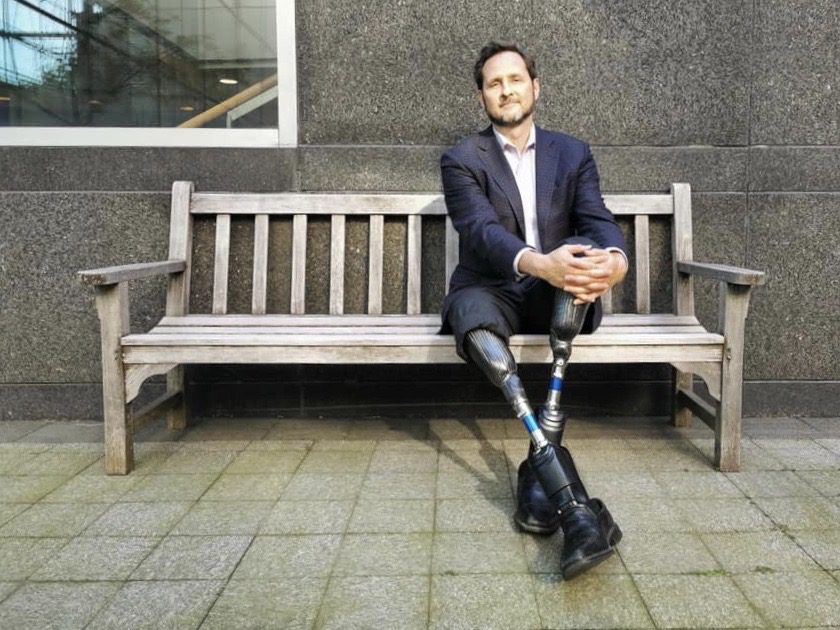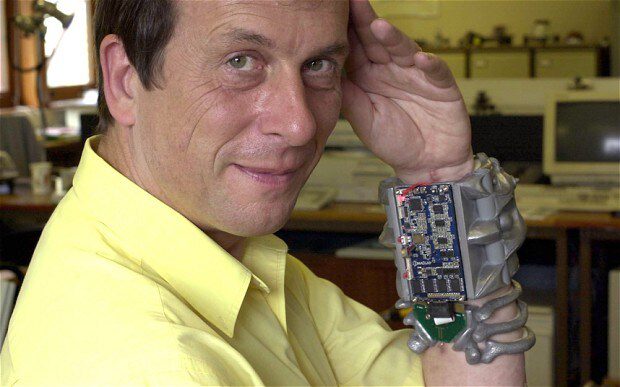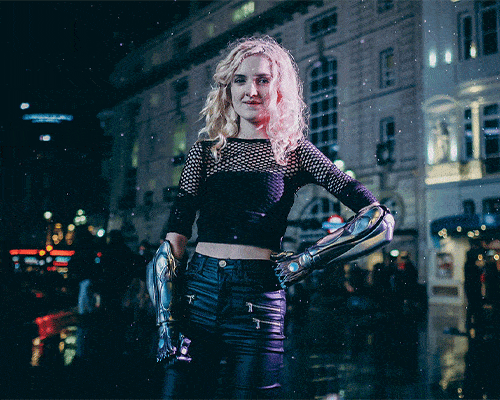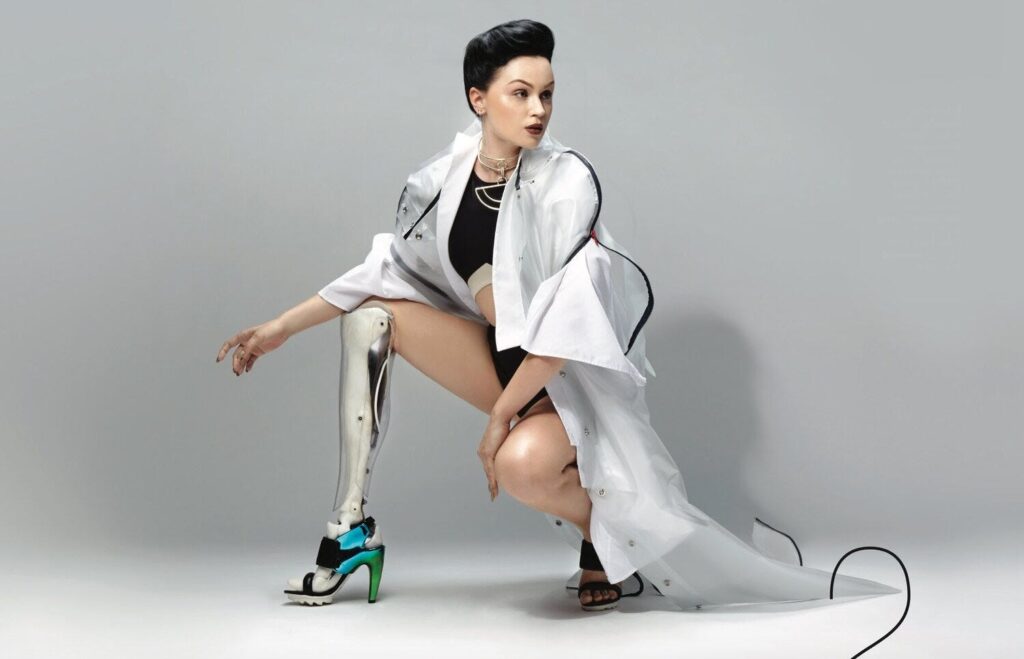The term “cyborg” entered our vocabulary in 1960, thanks to researchers Manfred E. Clynes e Nathan S. Kline. By putting the words “cybernetic” and “organism” together, the two coined a new term. Furthermore, a new semantic world that contemplates the mix of biological and artificial components capable of substituting or enhancing the abilities and functionality of a human being.
From theory to practice is the distance of an ocean. What technology is slowly going through to offer in the coming decades all the "add ons" that could "increase" our capabilities and our health. Our life.
In the meantime, here are 5 "snapshots" of as many real people who have carried on with the work, and can already define themselves as cyborgs.
The Rebirth of Hugh Herr

Hugh Herr was a promising climber, hailed as a prodigy. His career came to an abrupt end in 1982, when a tragic accident took off both of his legs. He was only 19 years old. However, Herr did not let this accident limit his potential: after a period of recovery, he embarked on an academic career and eventually worked at MIT, where he began studying and developing advanced prosthetic legs.
But Herr didn't just create prosthetics. He took it a step further, becoming a cyborg himself. He personally designed and fitted a set of bionic legs that not only compensate for his lack of natural legs, but also offer an incredible range of functionality. These technologically advanced prosthetics have allowed him to return to his beloved climbing and even surpass some of the capabilities of his biological legs.
Herr achieved worldwide notoriety in 2014 with his TED Talk, during which he presented his bionic legs. A speech seen more than 14 million times since then.
Today, Hugh Herr is a professor at the MIT Media Lab and co-directs the Yang Center for Bionics at MIT. Praised as a “Leader of the Bionic Age” by Time Magazine, he has dedicated his life to the advancement of bionic limbs and is responsible for numerous groundbreaking innovations in the field of bionics. His story is a testament to human resilience and the limitless potential of the interaction between humans and technology.
Kevin Warwick: The First Cyborg

If not the very first (but I think it's him), kevin warwick can be considered one of the first true cyborgs. In 1998, Warwick took a bold step in human-machine interface research by becoming the first person to implant an RFID chip into his body. This chip, part of the experiment called “Project Cyborg”, allowed Warwick to interact directly with computers through his body, paving the way for new possibilities of human-machine interaction.
Four years later, in 2002, Warwick took human-technology integration to the next level with the BrainGate, a small electrode array implanted in his arm. This implant allowed a direct connection between his nervous system and the computers, allowing him to communicate bidirectionally with the machine. The implant expanded his sensory perception, allowing him to feel electrical impulses, such as those sent by devices connected to the computer.
By also implanting similar electrodes in his wife's arm, Warwick experimented with forms of transmitting signals of movement, thought or emotion between the two individuals, in what many consider one of the first examples of technological telepathy.
Moon Ribas: the woman who "feels" earthquakes

I told you about Moon Ribas four years ago in this article when he co-founded the Cyborg Foundation, an organization to defend cyborg rights, promote cyborg art, and support people who wish to become cyborgs.
A category of which Moon, dancer and choreographer, is a full part: she has incorporated in her body thin implants that vibrate every time an earthquake occurs somewhere in the world. The device is connected online to seismographs and receives real-time updates on seismic activity.
Moon Ribas' choice demonstrates that cyborg identity can extend beyond simple physical enhancement or repair, becoming a way to experience the world in entirely new ways.
Tilly Lockey, the young cyborg icon

Tilly she was only 15 months old when her life was turned upside down by meningitis which almost threatened to take her away. The inflammation damaged her tissue to the point that her wrists had to be amputated. And she changed her existence forever. Growing up, Tilly used various prosthetics, all of which were rather bulky and impractical.
However, his story took an unexpected turn when OpenBionics, a startup spun out of the University of Bristol in the UK that specializes in creating 3D printed prosthetic limbs, reached out to her.
This company offered her the possibility of using new technologically advanced, lightweight and customizable arms. Her bionic arms, which have become an integral part of her identity, make her a cyborg. Since then, Tilly has started sharing her experiences on YouTube, becoming an influencer and inspiring many people who, like her, face life with prosthetics.
Viktoria Modesta, revolutionary bionic artist

Victoria Modest, a pop music and fashion icon, has become known not only for her artistic talent, but also for her bold embrace of technology.
Born with a defect in her leg, Modesta underwent numerous surgeries throughout her childhood and adolescence, but always suffered from mobility problems and pain. Ultimately, she made the courageous decision to undergo a voluntary amputation at age 20.
Since then, Modesta has embraced prosthetic technology as a means to express her individuality and push the boundaries of traditional aesthetics. His prosthetics have been customized in a variety of bold, futuristic styles. Two examples? A “chandelier” leg covered in Swarovski crystals and a tapered leg that looks like a stylized cleat. Prosthetics that not only allow her to move, but become artistic installations in all respects.
Collaborations were born with renowned brands such as Rolls Royce, GM, Intel, Snap, Veuve Clicquot, Autodesk. Videos of him are viewed by millions of people.
Through her art and public appearances, the cyborg artist challenges conventional perceptions of beauty and promotes self-acceptance and celebration. A few years ago, Viktoria was included in the BBC's list of the 100 most inspiring and influential women, the “BBC 100 Women”.
Real cyborgs, in short
Putting aside the elementary ideological positions according to which "becoming cyborg" would mean "losing humanity", in the 21st century, the idea is no longer just a science fiction topic.
The people featured in this article (and others around the world) are exploring how the integration of biological and artificial components can improve our lives, expand our perceptions, and create new ways of expressing ourselves.
Did you know them?


